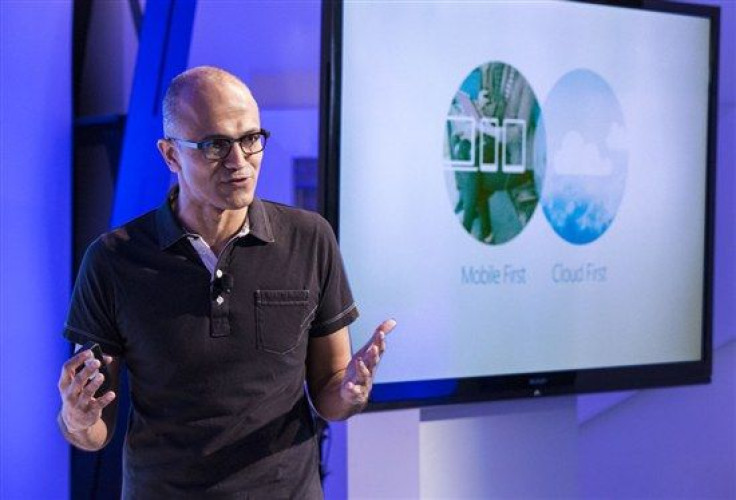Microsoft Office For iPad Could Mean Death Of Surface Tablets
When Satya Nadella made his first public appearance as Microsoft Corp.'s (NASDAQ:MSFT) CEO on Thursday at a press event in San Francisco, he announced that Microsoft Office would finally be coming to the Apple iPad. And you could almost hear the collective sigh of “It’s about time” from iPad owners who use Microsoft Office on their home and work computers (which is most people with an iPad).
But the bigger announcement from Microsoft was the one left unspoken. By releasing Microsoft Office for the iPad, Microsoft subtly admitted defeat in the tablet market and confirmed suspicions that Nadella would steer Microsoft away from consumer devices.

Before becoming CEO, Nadella worked with Microsoft’s cloud and enterprise division and helped bring cloud services to Microsoft Office. When Nadella replaced Steve Ballmer, many speculated that Nadella’s goal to unify Microsoft’s multiple products and services would mean the end to “non-essential” branches like the Surface line of tablets, Bing search engine and even Xbox video game console. Microsoft investors reportedly urged the new CEO and Microsoft’s board of directors to cut and run from the Surface tablet.
Microsoft Office was one, if not the biggest, selling point of the Surface line of tablets, and Microsoft just handed over the biggest advantage the Surface held over the iPad. Microsoft not only eliminated this advantage but also greatly improved the value of the iPad, the Surface’s biggest competitor. It appears to be the first clear signal that Nadella is preparing to pull the plug on the Surface.
“The availability of Office on the widely preferred tablet platform allows to make the Office environment of the knowledge worker follow its user, regardless of the device,” Robert Breza, a Microsoft analyst for Sterne Agree, told International Business Times. “The launch will bolster application support and could mark a step away from the consumer [hardware] business.”
It’s no secret that Microsoft has struggled with the Surface. Microsoft slashed the price of the Surface RT tablet by $150 in July and followed in September with a $200 gift card for turning in iPads. Microsoft revealed in its 2013 fourth-quarter earnings report that it lost $900 million on the Surface.
The Surface 2 and Surface Pro 2 failed to gain much traction among consumers. In its most recent earnings report, Microsoft trumpeted Xbox sales during the holiday season and remained conspicuously vague on Surface sales.
By getting out of Apple’s way in the hardware market, Nadella can help Microsoft focus on improving its valuable suite of productivity apps and creating a seamless experience across all devices and platforms.
The question now is whether or not the decision to abandon tablets and refocus on software will work for Microsoft. Several competing productivity suites have been made available for the iPad in the four years since the tablet debuted, including Google Drive.
So far, investors have responded favorably. Microsoft stock is up more than one dollar per share, and analysts believe it could provide short-term boost.
“Despite the resulting drag on Surface sales, we believe the launch is a short-term net positive for MSFT, as the [app] will likely be a top seller, boosting Office awareness and licensing revenue by about $600 million a quarter,” Breza said.
© Copyright IBTimes 2024. All rights reserved.












